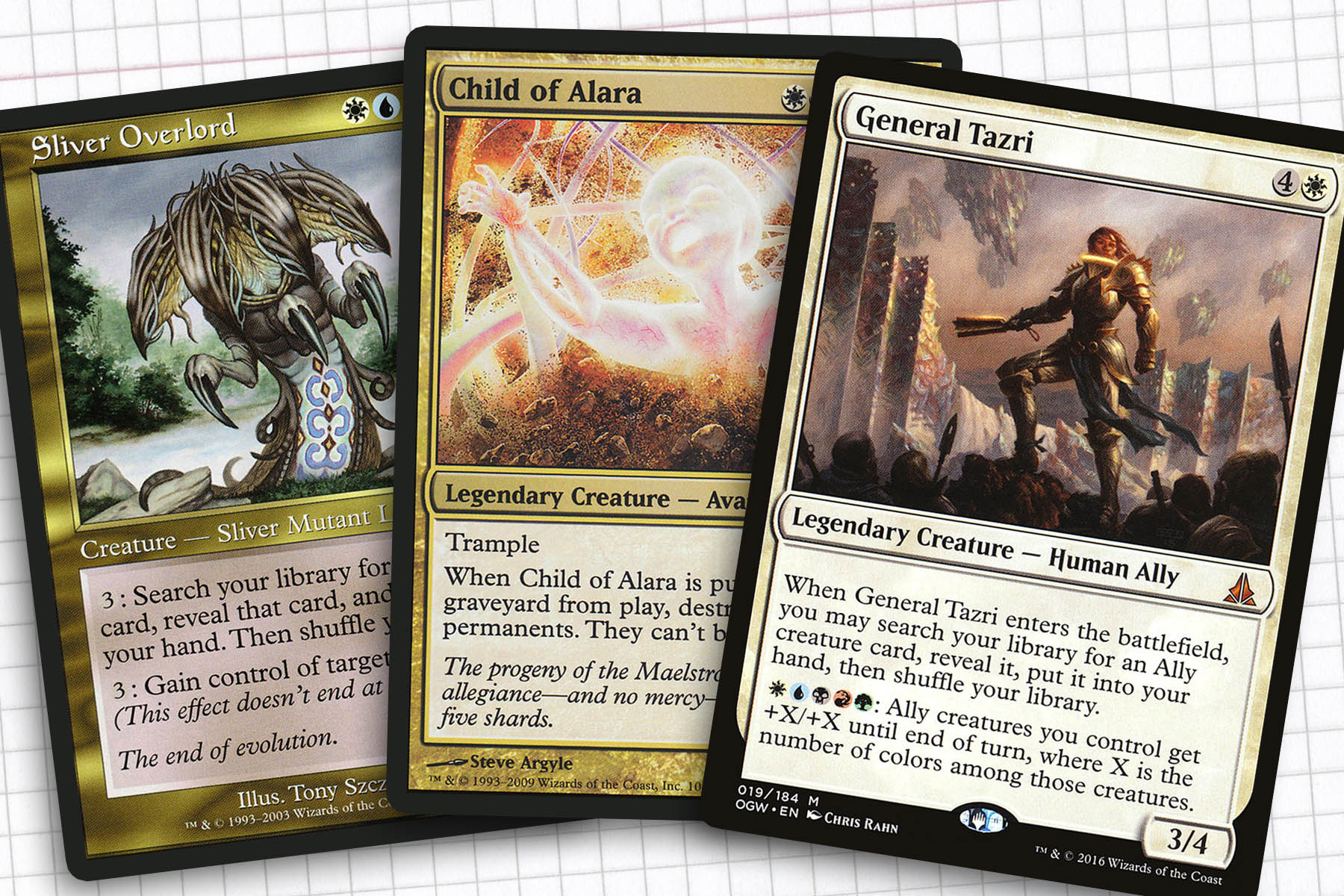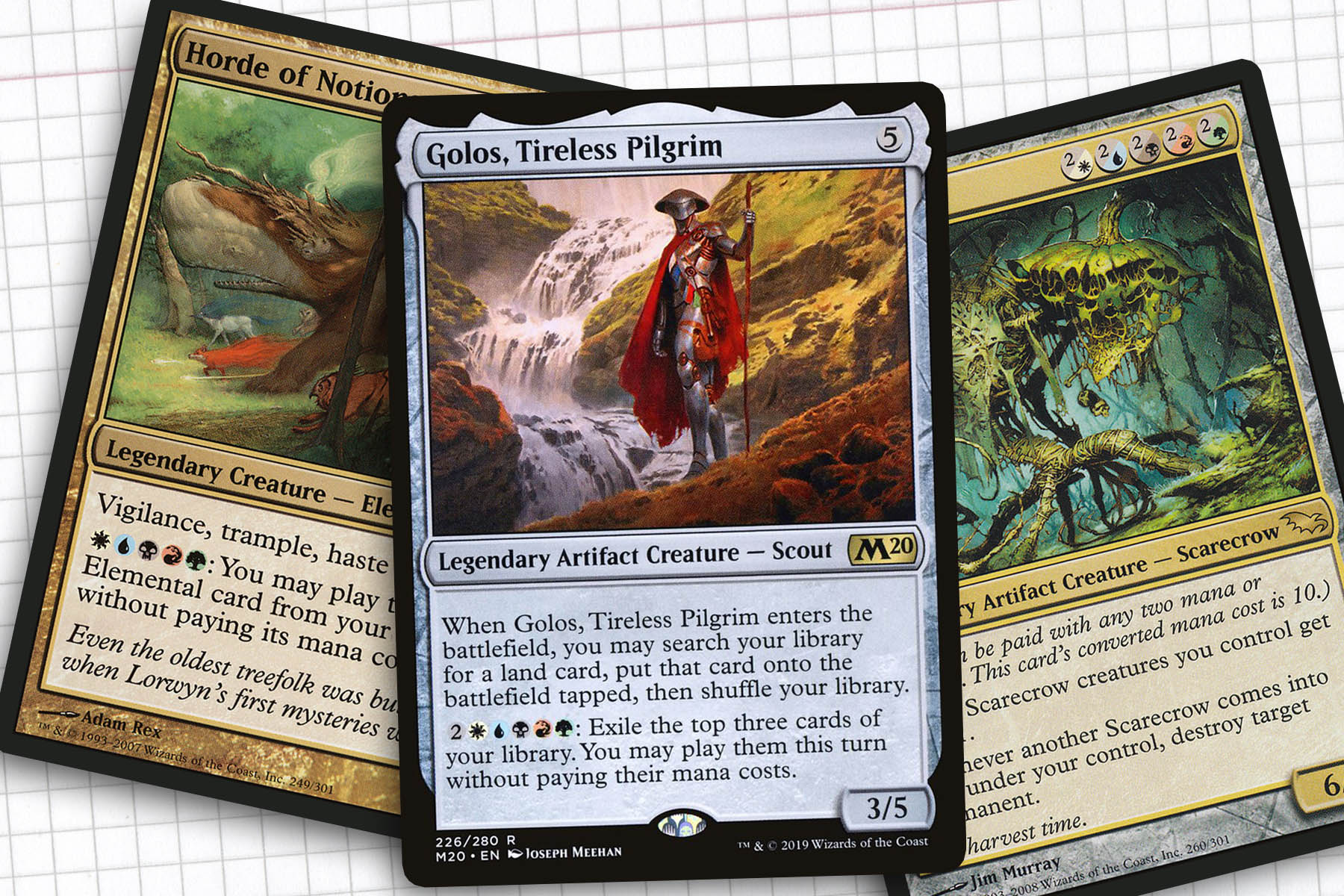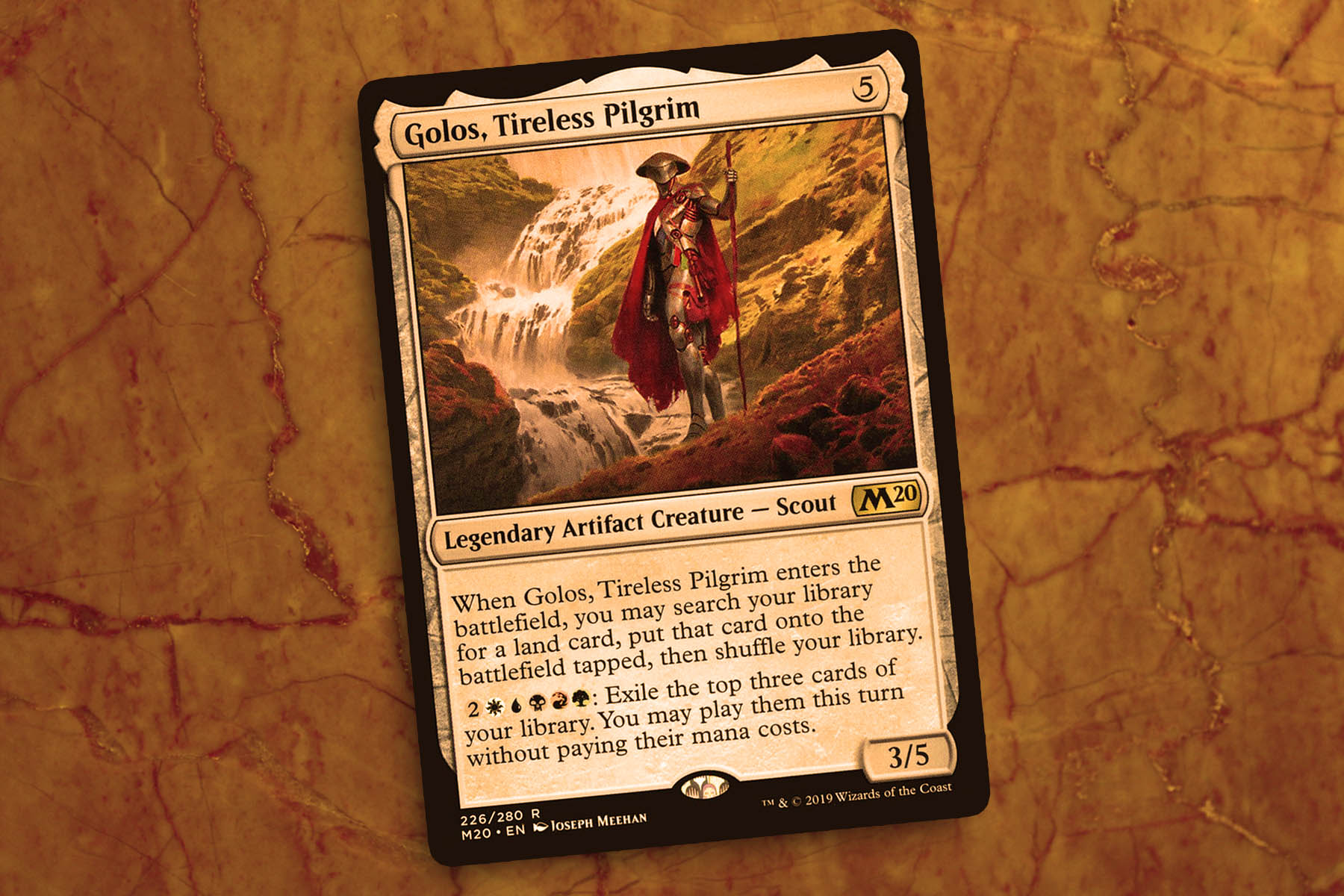On Monday, the Commander community was rocked by the announcement that we would no longer be able to play with Golos, Tireless Pilgrim. Simply put, Golos was one of the most popular generals on EDHrec; many players felt they had the rug pulled out from under them.
I was pretty neutral to the banning when the announcement was made. I’ve had relatively minimal exposure to Golos beyond the initial wave fueled by hype following Core Set 2020. It would be safe to say I never saw the average optimized list in action. But from my position, the card seemed really good, especially as a colorless artifact creature. But being colorless was not an immediate red flag, as that quality had not made Morophon, the Boundless or Ramos, Dragon Engine especially problematic.
Looking at Golos on a macro-scale and reading Sheldon Menery’s article on the banning, I began to understand why the general was not healthy for the format:
With a five-color commander, you have no restriction on what you can play in your deck. You get to pick from all the best spells legal in the format. The price you generally pay for that is that your commander is more difficult to cast and your manabase can get kind of awkward.
Golos negates both of those issues by having no color requirements in its casting cost, and then helping you smooth out the manabase by virtue of simply casting it and having it enter the battlefield. You get to search for any land card, not just basic land.
This excerpt spoke to a general sentiment that has rattled around in my brain for the better part of the last year and was enough for me to understand that this banning was good for the format. The design of five color generals has changed so substantially over the last few years that I believe that a ban like this was inevitable.
This week, I would like to look at the appeal of five color generals, where the current state of their building blocks may have gone wrong, and try to understand why so many feel disenfranchised by this particular banning.

The Rise of Five Color
No matter what era of Commander you started in, it’s safe to say that the appeal of a five color deck comes down to how flashy they can be and how they can play legal card. They are a good outlet for building everything from decks using all bulk rares to fully optimized decks.
I came up in an era where the archetype was led by either Cromat, simply because you wanted to be in five-color, Sliver Overlord, because you were a slivers player, or Child of Alara, because you wanted to make a statement. This was an era of good stuff decks—anything was possible and you never really knew what someone had chosen to do with their general. They hardly felt unfair, because the mana was rarely perfect and most people still played Ruination.
While there have always been a healthy number of these generals around, the first card I recall making a shift in the larger ecosystem was General Tazri. The design was novel at the time and hit the right notes, as Tazri provided a general for the allies deck that had felt under-served during our first trip to Zendikar. This color identity trick was seen again with Ramos, Dragon Engine, before Wizards used the one-two punch of Jodah, Archmage Eternal and Najeela, the Blade-Blossom in the summer of 2018. Unfortunately, from there the novelty of defining color identity in this way was beginning to wear off.

Five Color Hegemony
The design of five color generals has shifted noticeably in the last six years. No longer are these legendary creatures either too hard to cast due to the awkward mana requirements or bottlenecked in power level due to being a signpost for a single tribe. And from an outside perspective, I think that’s pretty great. The design of Jodah, Archmage Eternal is top notch in my opinion. I know full well that he is much better with only three colors in his casting cost, than he would ever be if he required a full WUBRG to cast.
In 2019, we got Morophon, the Boundless and Sisay, Weatherlight Captain, both of whom were pretty good designs. They have a purpose and their power level is proportioned to the theme their deck is built around. Then we met Golos, Tireless Pilgrim, an unassuming card that has proven to be the peak of this design principle. And in taking this journey, I find myself back at Sheldon’s article, agreeing with the Rule Committee’s judgment:
Golos is simply a better choice of leader for all but the most commander-centric decks.
The idea of scout tribal or assembling a Maze’s End win or Honden tribal all being possible with Golos is awesome; the problem is that’s not all that could be hiding below the depths of a Golos deck. I certainly don’t know better than the designers of Magic, but I think it is wise for them to understand that Golos is capable of doing too many things.
In my eyes, the best five color general is one that has built-in limits. Niv-Mizzet Reborn really wants you to play two-color cards, Reaper King wants a commitment to scarecrows, and Child of Alara still just wants to make a statement.

The Loss Experienced
I do not want to end today without acknowledging the thousands of people who have dedicated themselves to Golos and unfortunately lost what a favorite deck. Losing a general is always going to hit harder than losing a card from the 99. While we know that those five color decks can take on another general, it’s beneficial to keep in mind that there is cognitive bias which places a disproportionately high value on things a person partially created, a.k.a. The Ikea Effect. Players who invested time into crafting Golos have experienced that, even if subconsciously.
Reflecting now, the biggest issue with this banning may have been that it took too long to occur. Players got attached to a general they felt was powerful, but who appeared to be relatively safe from banning. And then the rug got pulled. I do not envy the position the Rules Committee—or the Commander Advisory Group for that matter—place themselves in coordinating these decisions and then remaining relatively public-facing during the aftermath. At the end they are people too, this will all blow over, and hopefully the format will become more diverse when this all shakes out.
Until next time, thanks for reading.
Ryan Sainio is a Graphic Designer who writes about EDH and the EDH community. He has been playing Magic: the Gathering since 7th Edition in 2002 and values flavorful and fun gameplay over competitively optimized decks.

